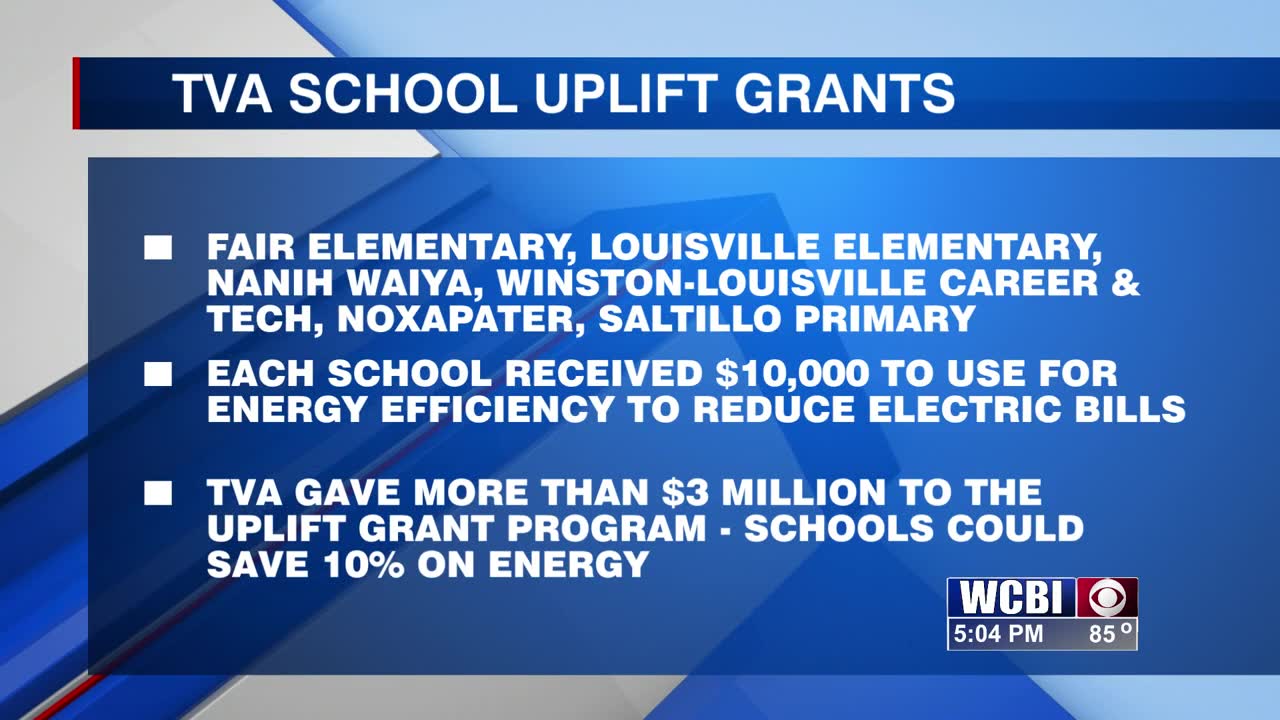Finance
That Article In 'The Cut' About The Financial Columnist Who Fell For A Shockingly Obvious Scam Is A Reminder That The Only Safe Place For Your Money Is In Non-Running Cars – The Autopian

I’m not sure if you’ve spent any time this week on the vast network of computers and EKG machines and cash registers that we collectively call “the internet,” but yesterday and today everyone seemed to be talking about an article on the website The Cut written by a financial advice columnist who got scammed out of $50,000. I’m pretty sure the article was such a popular topic of discussion because it contained so much rich, creamery schadenfreude packaged in such an appetizing way: a smug, wealthy person who literally writes about “financial literacy” for a living, getting convinced by the most inane, transparent of scams into cramming $50,000 into a shoebox and throwing it into the window of a Mercedes-Benz SUV. It’s a hell of a ride, but, more importantly, it lays bare the one bit of truly worthy financial advice: The only smart way to keep your money safe is clearly to transform that wealth into many non-running cars that you can then litter about your property or along a nearby street.
The financial-advice columnist, Charlotte Cowles, definitely went through something shitty: She got an unsolicited call from someone claiming to be Amazon, talking about some unexpected large purchases, and from there was transferred to people claiming to be from the Federal Trade Commission and then the CIA. They knew her Social Security number and information about her family, and talked her into pulling $50,000 from savings and giving it to someone purporting to be an undercover CIA agent.
![]()

In reading her account, the ruse seems glaringly obvious, and the insistence that she avoid telling her husband, lawyer, police or anyone should have made any remotely-familiar-with-modern-society person stop in their tracks and, you know, not give any money to these people. But that’s not how it played out.
To her credit, writing about it is a good thing to do, as it can help inform people of the dangers of such scams. She could have kept quiet, kept her reputation as a non-mark financial advice columnist intact, but she didn’t.
So, that was good of her, I suppose. I can respect that. Still, I can’t shake the feeling that my long-dead grandma, who spoke either six languages or none, depending on how strict you are with what defines a “language,” and who I think was illiterate, could have detected that something in the ham-fisted performance of these scammers was “off.”
[Editor’s Note: I want to make it clear that, though we’re poking fun at this columnist, we are empathetic. We don’t want her or anyone who is the victim of a scam to feel shame, especially given that this columnist mentions she had to attend therapy as a result of this incident. We wish her all the best; with that said, we’re just poking a bit of fun, here. And again, we respect her for telling this story and for raising awareness to this issue in a way that no public service announcement or less-compelling news story ever could. People are talking about scams right now, so Cowles’ story could really prevent someone from going through something similar. -DT].

The scam was the sort of thing that nobody I know would have fallen for, because no one I know would bother to take a phone call from “Amazon.” Amazon isn’t calling you! But, Cowles did think Amazon was calling her, and then the FTC, and then the freaking CIA, and she seems to have bought it all. If she was transferred to Sasquatch to confirm her bank account and routing numbers I have no reason to believe she wouldn’t have taken that call, too.
Cowles makes it very easy to be less than totally sympathetic because she notes how she’s an unlikely scam victim by writing this:
“Scam victims tend to be single, lonely, and economically insecure with low financial literacy. I am none of those things. I’m closer to the opposite. I’m a journalist who had a weekly column in the “Business” section of the New York Times. I’ve written a personal-finance column for this magazine for the past seven years. I interview money experts all the time and take their advice seriously. I’m married and talk to my friends, family, and colleagues every day.”
She’s clearly a person who comes from wealth — someone who can just get 50 grand at a moment’s notice without Googling “kidney removal to sell” and “do humans have a middle kidney” and in the end, she implies that the loss of that $50 large didn’t really affect her all that much.
Every step she takes in this thing makes you want to yell at your screen, in a vain attempt to stop someone from being such a rube, a patsy, a dummy. She’s a financial columnist! How? Why does she buy into this ridiculous crap? It’s maddening.
Okay, you just read the damn thing, I suppose. But, let’s get to the real important part here: She gave away $50,000 in a shoebox. Clearly, cash is not secure. It’s too portable, too easy to just lose or hand off. A strong wind or a horny dog can make $50,000 in cash disappear far too easily. And don’t get me started on electronic storage of money; that’s even worse — you can lose countless sums in microseconds, with no actually sensory notice or anything at all, just invisible electrons whizzing through highways of metals, or electromagnetic waves, gliding unseen through the air.
But you know what is a secure way to store your wealth? In the form of a car. Ideally, a non-running one.
‘Hold On, I’m Gonna Have To Rebuild This Motor And Tune This Carb, Then Sell A Few Cars Before I Get You That Cash’
My yard is currently littered with a 1989 Yugo, a 1977 Dodge RV, a 1973 Volkswagen Beetle, and a 1989 Ford F-150, all of which are, for some reason or another, currently immobile. Well, at least under their own power. And those heaps, sitting there, un-garaged, getting wet and a little moldy in places, generating their own rich, redolent smells, represent the vast majority of my material wealth here on Earth. This is why I really should be a financial-advice columnist for an outlet like The Cut or perhaps Oui, if they’re still in print.
You see, those four non-running cars are at that perfect point in their automotive lives that they’re really not losing value any more; they’re holding their considerable value, and, barring a horrible bout of rust or a falling tree or a determined bolt of lightning, are probably worth hundreds of thousands of dollars! At least, according to my math.

Maybe half a million? Who knows? The value of non-running Yugos, for example, has to be skyrocketing, as Yugos are just getting more and more rare, which, of course, is the primary determinant of car value, right? That’s why everyone who kept their Chevy Vegas and first-gen Honda Preludes are now likely, what, billionaires? That sounds right.
You see, a non-running car is a vault of wealth, one that can’t easily be moved from where you put it. That’s why the non-running thing is key. Also helpful are tires that have lost most of their air, and, even better, small trees that grow between the bumper and body, a biological security system that will definitely keep your investments safe.
So, if I get a call from Amazon, and, miraculously, answer it, and then just play improv-style “yes, and” to every request made by the voices on the other end, I know that my wealth is still safe and secure because any $50,000 I may have is in the form of a bunch of mildewing shitboxes killing the grass of my lawn or, perhaps more positively, keeping my precious driveway gravel secure. I literally can’t be scammed out of money over the phone! It’d take a scammer with a tow truck, a lot of free time, and a preternatural resistance to both tetanus and poison ivy to scam my wealth away from me.
And, if I need to return those cars into money, then all I have to do is, let’s see, reinstall some carbs after I get that engine un-seized, or install that new flywheel and rebuild a transmission, or figure out what the hell is wrong with those fuel injectors, I think, or why the timing doesn’t seem to be doing anything, and that’s um, it! Then it’s just a quick process of selling and boom, cars into cash! It’s foolproof.
So, as you get this article passed to you by friends looking to enjoy a satisfying, self-confident chuckle at someone else’s $50,000 worth of expense, I hope that you’ll take a moment to repay their favor with some genuinely good advice that they can definitely use: put your money into non-running cars, and litter them with pride alongside your street curbs, underground parking areas, or, ideally, lawn.
It’s the best possible financial advice there is. Take it from me, someone who just decided that they’re a financial-advice columnist and who has never, ever, been scammed out of $50,000.
I wonder how many more Yugos I can fit on my lawn?

There Was A Real Car Company Called ‘American Chocolate’ And It Was More Influential Than I Ever Imagined
These Are The Most Nightmarish Car Feature Subscriptions I Could Think Of
How Did I Not Know That Chevy’s Most Iconic Late ’60s/Early ’70s Cars Had Headlight Washers

Finance
Do finance transparency laws have a chance in Michigan?

Should lawmakers have to reveal their donors and the amount of money send to them? Republican state Sen. Ed McBroom, (R-Vulcan), certainly thinks so. Dark money accounts shield the finances that lawmakers benefit from, which can also mask any problematic influences behind their campaigns.
Finance
I Have a Six-Figure Savings Account. It’s Completely Useless.

Pay Dirt is Slate’s money advice column. Have a question? Send it to Athena, Kristin, and Ilyce here. (It’s anonymous!)
Dear Pay Dirt,
How does one figure out what they’re even saving for? I’m reaching my 30s, and many of my friends are still in very “spendy” times of their lives—a lot of them spend big on going out/vacations/etc. by using the sentiment, “What am I even saving for?” I’m admittedly a bit more conservative with my money and try to save as big a portion of my salary as I can (while still making space for the things I enjoy). Because of this, I’ve amassed quite a bit in savings (just over $100,000).
But lately, I’ve been wondering, what am I actually saving for? The chances of affording a home one day in my high cost of living area are actually very small (a lot of people here are lifelong renters, even into middle age). Of course, there’s money for emergencies and retirement, but beyond that what is all this money actually for! How do people decide? It seems like the natural conclusion is saving for a home, but if that’s out of the picture, what then?
—A Saver With Doubts
Dear Saver with Doubts,
Congratulations on hitting a huge milestone: $100,000 in savings. That’s no small feat, and I’m sure you’ve made some tough choices to get there. I’d like to reframe your questions. You ask, “What am I saving for?” as if the only answer is something tangible: A house, a new car, a big, fancy trip. Instead, imagine if what you’re saving for are “options and opportunities.”
What happens if you save too much money? You can take a year off, retire early, help your family and friends, or contribute to a worthy cause. You can indulge your passions, whatever they may be, go back to school for an advanced or different degree, become a caregiver, or stay at home and game all day long. Having money in the bank (and hopefully the stock market) gives you the option and opportunity to explore and experience your life differently.
As for saving for a house, let’s reframe that, too. What if you continue to rent in your neighborhood but buy a vacation or investment property elsewhere? Could you start building a nest egg of rental properties or perhaps purchase a small commercial building that will eventually deliver passive income to help fuel your options and opportunities? You’re building financial security that will pay off down the line, just when you need it most. So, keep an open mind. Talk to people about their lives and investments. I have no doubt that one day you’ll find an opportunity worth pursuing.
Want Advice From Pay Dirt?
For questions on the money issues in your life try submitting to Pay Dirt!
Dear Pay Dirt,
My wife is in her first year as an attending physician and is absolutely burned out. She wants to quit and find a part-time position that would likely pay her around $100,000 less per year. We have a 3-year-old and recently bought a house in a high cost of living area based on the assumption that she’d be working full-time. We barely have savings after her eight years as an underpaid medical student and resident.
I want to support her choices, but I also know we can’t make up $100,000 just by cutting back on Starbucks. We would have to make life-altering changes to stay afloat financially. We fight whenever I bring it up. She gets upset when I talk about the trade-offs, and I get frustrated when she refuses to consider them. How should we approach this problem? What can I do differently?
—Bad News Bearer
Dear Bad News Bearer,
Your wife must be under immense stress: She’s in her first year as an attending physician, getting used to all that working full-time entails. She probably feels that she’s short-changing everything else in her life, including you, your toddler, and your marriage. She’s worried about financially supporting the family without losing her mind, especially if she has student loans. (The average medical school graduate owes over $250,000 in total student loan debt and 73 percent of medical school graduates have educational debt.)
For what it’s worth, my doctor friends say the first few years as an attending are the worst. You’re getting used to the job, the hours, and the pushback you get from the healthcare industry, older/more established physicians, and even some of your patients. So, yes. Her life is tough right now. She knows you’re barely making it financially. What she doesn’t realize is that she has a partner in her success: You!
You’re watching her struggle and in addition to keeping your eye on the bottom line, you have to help her remember why she went through eight to 12 years of schooling and residency to become a doctor. Help her recall the trade-offs you both made so that she could achieve her dream. Back off on the money discussion for the moment and focus on what you can do immediately to lighten her load. Can you pick up more slack with your toddler? Do more around the house? Manage playdates, run errands, or find a way for your wife to get some personal time (and maybe a massage, if she enjoys that sort of thing)?
More concerning is that you two are talking past each other when it comes to money. She doesn’t want to give up her home and lifestyle, not after all the time and energy she spent to get there. That’s why she fights you whenever you bring it up. On the other hand, you don’t want to dig a hole you can’t climb out of. That’s fair, too. The good news is there’s a way through these tough times. It involves sitting down and talking about how hard things are now and the timeline for when you both envision them getting better. Make a list of the positives and negatives of her staying full-time. Figure out how long it will take her to feel better about work and stabilize your finances. It might take six months or a year or two to get there. But I find that once you put a number down on paper, you can mark time against it. Writing down financial goals helps put things in perspective. It’s your own 30,000-foot view. Then, check-in at three or six months and see how much progress you’re making. If she’s still unhappy, nail down the new pain points she’s feeling and work to relieve the pressure. Is there a way you can increase your income to help balance a reduction in hers? Is there a temporary part-time role she can take on while she recovers her equilibrium that would help save on child care or other expenses? Are there strategic cuts (beyond Starbucks) that will help you stay in your home and focused on the future while you work through this financial pinch?
If you can’t have this conversation calmly (and opening a bottle of your favorite beverage doesn’t help), then you might need a third party to help you get there together. Marriage counseling is where I’d start. See if you can find a way to communicate about your money issues that doesn’t sound (to her ears) like a threat, a give-back of hard-won gains (like the house), or a vision of a bleak future devoid of fun. Once you learn how to talk to each other about money, find a financial advisor you can trust to help you plan through the tough times and visualize all the good stuff that’s coming.
Want more Pay Dirt every week? Sign up for Slate Plus now.
Dear Pay Dirt,
My husband and I (38 and 40, no kids) have steadily worked our way up and after 14 years of marriage, I feel like we’re finally pretty comfortable. We have a combined income of just over $100,000, a house with a decent amount of equity, retirement accounts, a more short-term investment account, and a savings account (“high-yield” at a pitiful half a percent) with around $60,000 in it. Our only debt right now besides the mortgage is my husband’s student loan, around $10,000.
I guess my question is… what now? Should we pay off his loans? Should I be more focused on maxing out retirement savings? Put some money into renovating our house? We have a financial advisor, but he’s pretty low-key and just asks us what WE want. I’m not sure how to prioritize!
—We’re Comfortable, Now What?
Dear We’re Comfortable,
What a nice place to be at 40. Congratulations on doing so much right. Here are a few suggestions for taking it all to the next level:
First, take some of your low-yield savings and pay off those student loans. You’re probably paying 8 percent on the debt while earning half a percent. That’s not a winning strategy. And, while you’re at it, there are plenty of true high-yield savings accounts online. Some are returning 5 percent, or more. So, find one (Bankrate lists a bunch) and transfer a big chunk of your excess savings there so you can make your money work harder for you.
Next, absolutely maximize your 401(k) accounts. And, if you haven’t already, open up a couple of Roth IRAs. In 2024, you can plow up to $7,000 each in after-tax funds ($8,000 if you’re at least 50 years old) into those accounts, which will grow tax-free forever. Trust me: It’ll be nice to have the option of using tax-free funds in retirement. Once you’ve done all that, pay down your vehicle loan(s) and home loan.
As for renovating your house, that’s a huge project in and of itself. The question you need to answer is whether you need to do something (i.e., the roof is leaking) or you think you’ll live happier or better in some way. That could mean freshening up your decorating or perhaps tackling a larger project like redoing a bathroom or kitchen. Renovating your home is costly and it takes up a lot of time. And, unless your home is way out of date, it’s unlikely you’ll recoup the cost of the renovation within a year, according to the latest Cost vs. Value report. I wonder if you wouldn’t have more fun planning a special trip somewhere instead.
Finally, I’m all for steady and dependable financial advisors. But asking you what you want without offering a conversation around setting goals seems a little too laid back. Try engaging your financial advisor in a conversation about short-term and long-term goals. Put down some of each on paper and spitball some numbers so you know what you’re working toward. Then, go back to your financial advisor and have a more specific discussion about each item on your wish list and talk about what it would take to get there now, in five years, or in retirement.
Dear Pay Dirt,
My partner and I are finally about to move to a big city with a much higher cost of living compared to the smaller town we’ve lived in for the past few years. We’ve talked about this move for many years and are finally in a place with our careers where we can make it happen. We’re so excited! We’ve started the initial search of looking for apartments. But there’s one thing that’s keeping me up at night: How do we prep for this major change in the cost of living? Our rent is about to at least double, that is the easy part to prepare for. But I can’t stop worrying about everything else: groceries, transportation, nights out, hobbies, etc.
Right now we don’t have strict budgets, we just generally spend about $300-ish on our credit cards bi-weekly and pay it in full when we get paid and keep track of our spending in that way. I know realistically we won’t be able to save as much as we do now, but how does one prepare for this big of a financial change? Do we need to make a strict budget even though we’ve never been spreadsheet people?
—The City of $$$
Dear City of $$$,
Landing a long-time dream feels great, doesn’t it? But like most things in life, dreaming is safe while reality bites. I don’t love the idea of setting a strict budget now without knowing what your new life will cost. It’s like saying you’ll spend $10,000 renovating your kitchen before you discover that the stove you’ve been eyeing actually costs $15,000.
Instead, do some field research. Move into your new place and unpack. Take a month or two in your new city and see where you’re spending money. Focus on your behavior, not on the dollars. For example, if you find yourself eating out every night or ordering food for delivery, you know you’ll wind up in the red pretty quickly. So limit restaurants to one or two nights a week, and make sure you have enough food in the fridge so your default isn’t DoorDash. If theater or concerts are your thing, buy tickets monthly, not weekly. Make sure you have a healthy emergency savings account and are continuing to contribute to your retirement savings.
I do want you to write down what you’re spending. Use a pad of paper, your phone, a budgeting app, or a spreadsheet. At the end of the month, take a look at your credit cards and bank accounts. Are they in balance? Are they (hopefully) growing? If not, go back to your list of expenses and analyze where you’re leaking cash. You may have some extra one-time expenses that won’t be repeated or perhaps you met friends for drinks a few too many times. You should be able to pinpoint a few places where you can reduce your spending immediately and keep your budget in balance.
If the goal is to stay in this new city permanently, then you’ll need to find a way to pare back while still enjoying the social and cultural benefits your new home offers. Writing down every cent you spend will speed up that process and get you to the joy part faster!
—Ilyce
Classic Prudie
Recently, a local center focused on LGBT issues posted my dream job. I was not able to apply due to timing. My partner applied and got the job. I know she’ll be incredible at it. But I feel very envious knowing that my dream job exists and I missed out.
Finance
What RBI proposal for tighter project finance rules will mean for REC, PFC?

Seeing the implication of the RBI proposal for tighter project finance rules play out on the likes of an REC and PFC, gives us a sense of the negative implication for such
Anil Gupta: Basically, the regulation which has come out is harmonising the guidelines which were there for banks and NBFCs earlier. For example, today if a project defers its DCCO and that deferment is within a period of two years, the standard asset provisioning norm for a bank is 0.4% and for an NBFC it is 0.25%. Now what this circular is saying is that even if there is a deferment of DCCO within a period of two years, because there have been some deterioration in the project fundamentals, the standard asset provisioning should increase to 5%. So, this 5% provisioning requirement, which is specified with this circular, in our view is applicable only for the projects which are taking a DCCO extension and not for all the projects which are under construction. Now, if this deferment is beyond the two-year period, let us say for an infra project, the earlier guidelines required a provisioning to increase to 5%. The new guidelines which they are proposing says that if the deferment is beyond two years, then additional 2.5% over and above the 5%, which it is currently specifying, will kick in.
Unlock Leadership Excellence with a Range of CXO Courses
| Offering College | Course | Website |
|---|---|---|
| IIM Lucknow | Chief Operations Officer Programme | Visit |
| IIM Lucknow | Chief Executive Officer Programme | Visit |
| Indian School of Business | ISB Chief Technology Officer | Visit |
So, total provisioning requirement for cases or projects which are deferring DCCO by more than two years, will be 7.5%. While this is good from the strengthening of the balance sheets for the banks, because any project, let us say, which is undergoing a DCCO extension has undergone a change in the risk. So, the increased provisioning requirement, even if the DCCO extension is up to two years, is a positive thing and that is a good thing. Another positive which we are seeing in the circular is that as per our understanding, the 5% provisioning which was there in the earlier guidelines for the projects who have taken a DCCO extension beyond two years, now the current guidelines allow that reduction in the provisioning from 5% to 2.5% and to 1% if the project commences the COD and also repays the debt to the extent of 20%. So, that way, it will be positive if the project is able to demonstrate the repayment to the extent of 20% of the debt at the time of DCCO extension, then the lenders will be able to release the provision also from 5% to 1%. So that way, we believe that it is positive for the bank’s riskiness; if there is a DCCO extension, then you increase the provision that will also force the lenders as well as the borrowers to possibly fix up a DCCO which is more realistic and you do not take a leeway in terms of a DCCO extension which is available let us say up to two years without additional provision.
So, you will fix up a more realistic DCCOs, more mindful in terms of setting out a repayment schedule which will align with your cash flows so that you do not have to avail a DCCO extension even though the project is complete but is not generating good enough revenues to service the debt. Overall, it is a good thing from the balance sheet strengthening as well as provision release once the project is operational and repays the debt.
PFC and REC are well capitalised. Do you sense that it may not lead to any damage on their profits and losses because their balance sheet is well capitalised?
Anil Gupta: I will not comment on the stock specific things but in general, it is applicable only for the projects which are availing DCCO extension. So, one, that the DCCO portfolio for the banks will not be very high or the lenders will not be very high; we are not talking about entire under construction portfolio of the lenders, we are talking only on the portfolio which would have availed DCCO extension and we should be mindful of that in the last few years if we leave aside maybe the thermal power or the roads which have been a long gestation projects and are more prone to DCCO extension, the recent expansions have largely been in the renewable energy space or let us say projects which are less prone to maybe DCCO extension.
But lenders and the borrowers have to be mindful of setting up DCCO because in the current set of rules being proposed, DCCO deferment will kick in a higher provisioning requirement.Down the line, could this regulation lead to lower loan growth?
Anil Gupta: No. First given the market reaction, there could be a case where maybe more clarification can emerge as to whether 5% provision requirement is on the entire under-construction portfolio of the lenders because our reading is that it is only for the cases where the project is under construction and has sought a DCCO extension.
So, if that clarification comes, it should not be really negative for the sector because it is only a positive from the balance sheet perspective of the lenders that you are taking care of the risk which has gone up because of DCCO extension. So, per se, if that clarification comes, it should not be any negative for the credit flow for the sector.
-

 News1 week ago
News1 week agoBoth sides prepare as Florida's six-week abortion ban is set to take effect Wednesday
-

 Politics1 week ago
Politics1 week agoColumbia University’s policy-making senate votes for resolution calling to investigate school’s leadership
-

 Politics1 week ago
Politics1 week agoGOP Rep. Bill Posey won't seek re-election, endorses former Florida Senate President as replacement
-

 World1 week ago
World1 week agoBrussels, my love? MEPs check out of Strasbourg after 5 eventful years
-

 World1 week ago
World1 week agoRussian forces gained partial control of Donetsk's Ocheretyne town
-

 Politics1 week ago
Politics1 week agoHouse Republicans brace for spring legislative sprint with one less GOP vote
-

 World1 week ago
World1 week agoAt least four dead in US after dozens of tornadoes rip through Oklahoma
-

 Politics1 week ago
Politics1 week agoAnti-Trump DA's no-show at debate leaves challenger facing off against empty podium


















